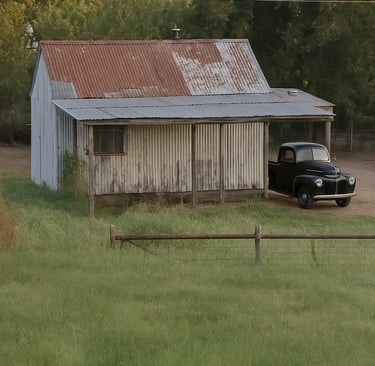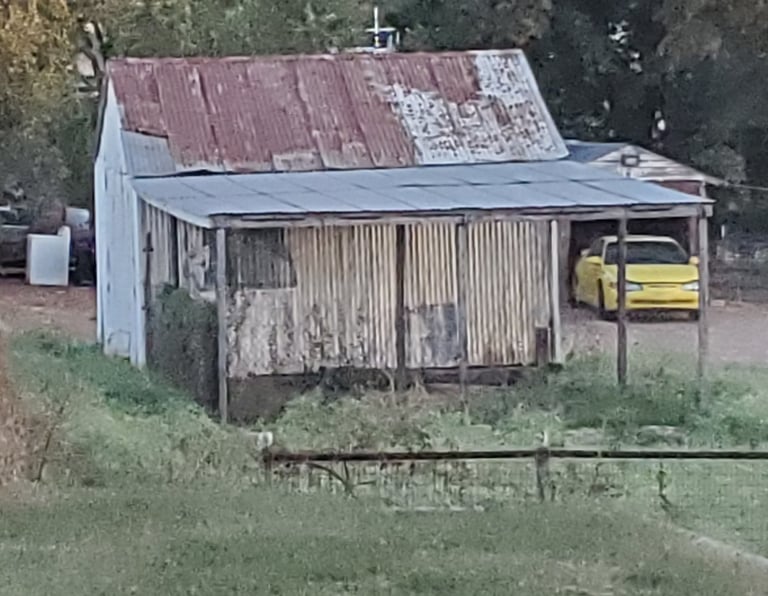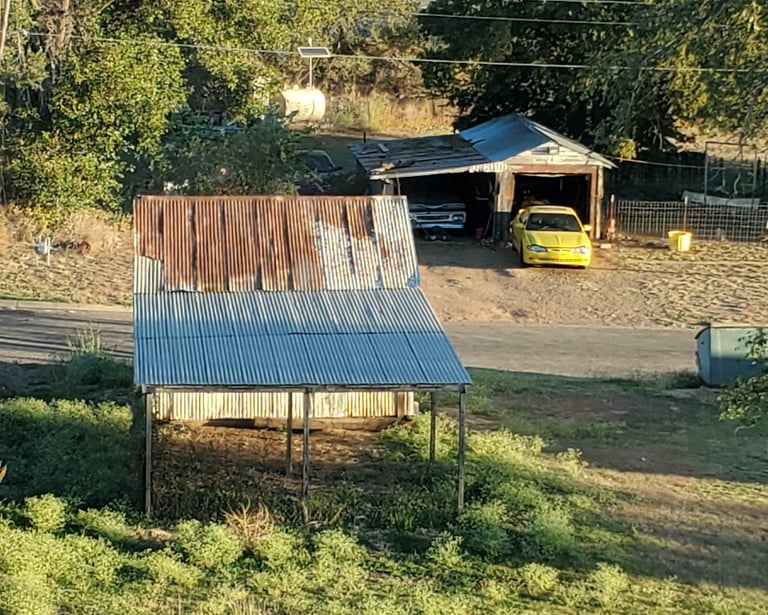What's Stopping You? Change Your Life!
Shamrock Texas
Reality and Perspectives
WILLIAM
10/25/20255 min read


Don’t get me wrong — I like Shamrock, Texas. It’s a small town near the Texas–Oklahoma border, really the last developed outpost before crossing into Oklahoma from Texas along the I-40 corridor. After driving eight-hour days for four straight days, Shamrock is a welcome sight as it rises gently from the plains. With exhaustion setting in, I’m simply grateful to have reached my last stop for the night.
There’s only one exit from the interstate into Shamrock — Exit 163, U.S. 83 — the main artery that takes you straight into town. The frontage road winds up a small bluff before meeting a stop sign at the crest. From there, U.S. 83 runs north to south through the heart of Shamrock, doubling as the town’s main street, locally known as 13th Street. If you’re tracing old Route 66, this is the same stretch — the historic highway that once carried dreamers west now runs quietly parallel to Interstate 40 just to the south.
The road into Shamrock feels as though it’s been waiting patiently for travelers since the heyday of Route 66. Grain elevators rise like old watchtowers, and the green-trimmed Art Deco spire of the U-Drop Inn still gleams proudly against the horizon. There’s a kind of silence here that isn’t emptiness — it’s patience, the sort that belongs to the land and the people who’ve stayed.
My hotel for the night was the local Holiday Inn Express. Normally, I lean toward Best Westerns — clean, affordable, and usually equipped with a decent breakfast — but this time I was searching for something else: peace and distance from the railroad tracks. Most of I-40 runs close to the old Santa Fe line, which was once the backbone of Route 66. The highway followed the same path through mountains and deserts because the railroad had already charted the best grades. That means the modern hotels are usually right by the tracks — convenient, but noisy.
The Holiday Inn, however, sat apart — surrounded by barns, feed stores, and open fields. The tracks were far enough away to be just a faint whisper. Perfect. The evening clerk, Derrick, greeted me with easy kindness, the kind you only get in small towns. We unloaded our bags and noticed something curious: there were no fences between the hotel, the fields, or even the neighboring lots. You could walk from the parking lot, across a pasture, through a feed yard, and end up at the Tesla chargers without crossing a single barrier. It’s a kind of openness that feels rare — and strangely comforting — out here in the Midwest.
Morning came with that familiar hotel-breakfast smell: waffles, coffee, and conversation. The dining room was bright, the company friendly, and outside the window sat a small shed in a windblown field — a scene straight from a postcard. It was rustic and honest, like something that would have graced a midcentury travel brochure. The only thing missing was a mid-1950s Ford pickup beside the shed. Instead, parked in the grass, was a spotless 2006 Chevrolet Impala in Rally Yellow.
It caught the morning sun just so — a flash of modernity against weathered wood and wheat-colored grass. It wasn’t what I expected. My mind said, This should be a pickup truck. Yet there it was, defying the picture I’d built in my head of what “Americana” ought to look like. The barn’s paint had long faded to gray, its boards warped from decades of wind. The Impala’s yellow body gleamed in the light — two opposites sharing the same quiet patch of land. It struck me that I’d made an assumption, one based on a story I thought I already knew. The old and the new, the rough and the refined — they didn’t clash as much as they simply coexisted.
We returned to our room to pack to leave. As I folded a shirt for my suitcase I looked out the window to see the shed again. That’s when I realized this was a story of assumptions and perspectives. From this height I could see that the Impala, boldly announcing its presence in rally yellow was actually parked in another yard. It did not belong to the property with the shed. It was only through lighting, angles and a sense of my expectations that I misunderstood the image. And I wondered how often we all do that. How often do we see something, make assumptions and are disappointed. On this journey I was reminded to look but not judge or assume.
And maybe that’s what Shamrock is too — a place that lives comfortably in the space between expectations (the lucky shamrock and leprachauns) and reality. A town still breathing on the shoulders of old highways and open plains, waiting for whoever happens to pull off at Exit 163. And making no assumptions.
If You Go
Getting There
Shamrock, Texas, rests just west of the Oklahoma line along Interstate 40 at Exit 163. Going either north or south you can get there along U.S. 83. U.S. 83 cuts straight through town, linking it north to Canadian and south toward Childress.
Where to Stay
The Holiday Inn Express sits quietly on the edge of town, surrounded by barns and open pastureland — a comfortable pause between long stretches of highway. Rooms are clean and calm, and the morning coffee is strong enough to make the next leg of the drive seem possible. If you’re craving something with a bit more nostalgia, several roadside motels still glow with vintage Route 66 neon, each carrying its own stories in faded paint and parking-lot dust.
What to See
At the heart of town stands the U-Drop Inn, a gleaming Art Deco time capsule from 1936. Its green-trimmed spire and polished tile still catch the morning light just as they did when cross-country travelers stopped here for gas and a slice of pie. Inside, a small museum and café celebrate the town’s Route 66 heritage.
Along 13th Street, you’ll find restored storefronts, quiet diners, and a sense of continuity that has outlasted passing decades. Step beyond town and the land itself becomes the attraction — wheat fields swaying under an enormous sky, and freight trains carving through distance.
When to Go
March brings Shamrock’s St. Patrick’s Day Celebration, a spirited weekend of parades, live music, and green-tinted everything. The rest of the year, it’s a quieter stop — a good place to rest, refuel, and let the road dust settle before moving on




